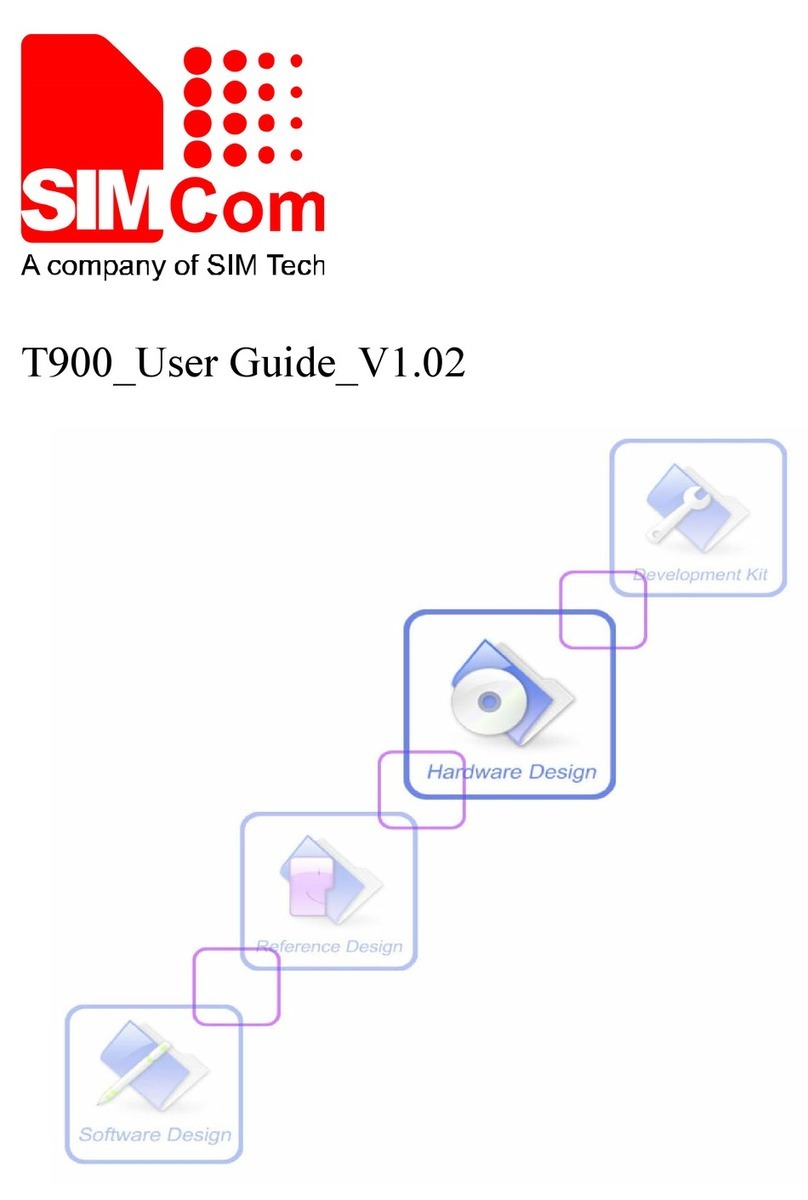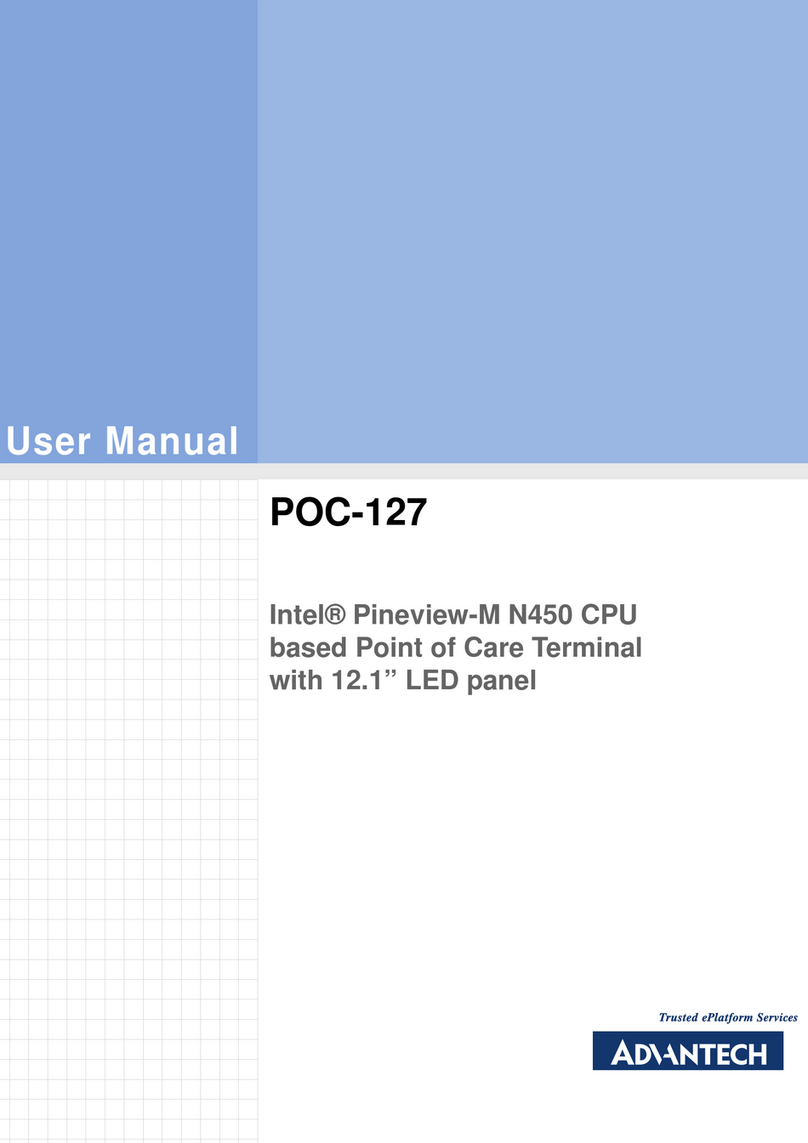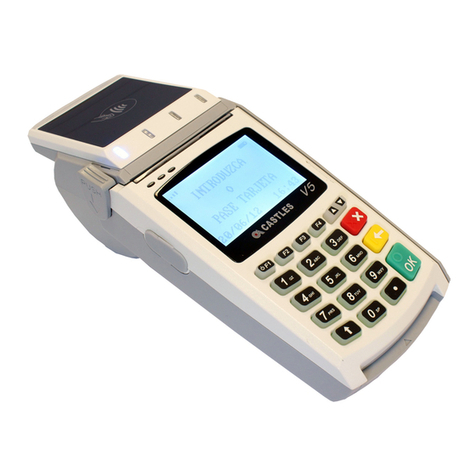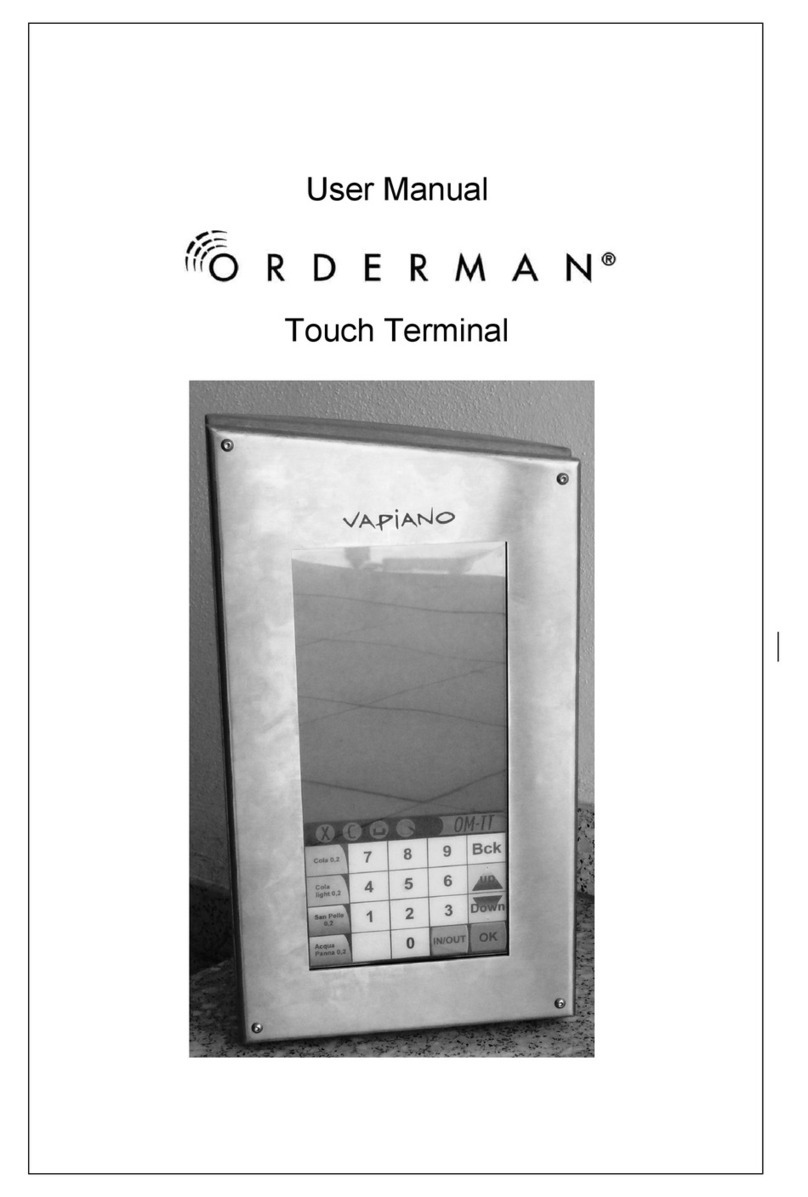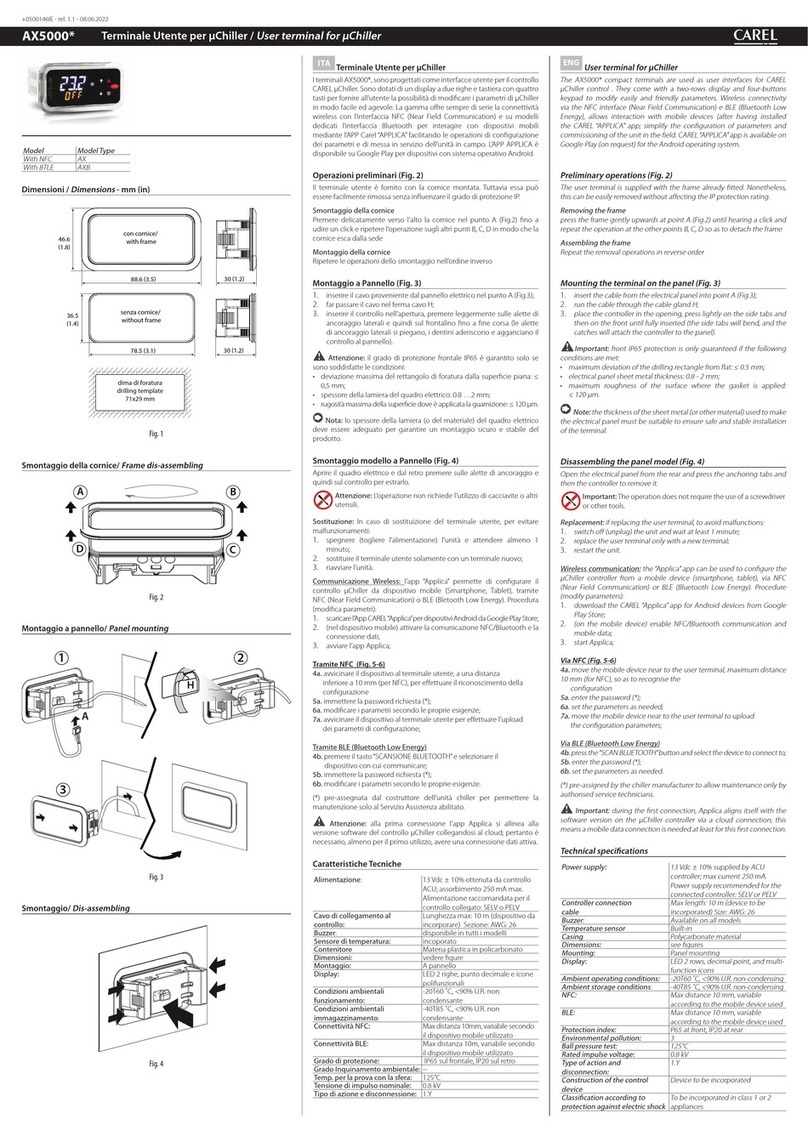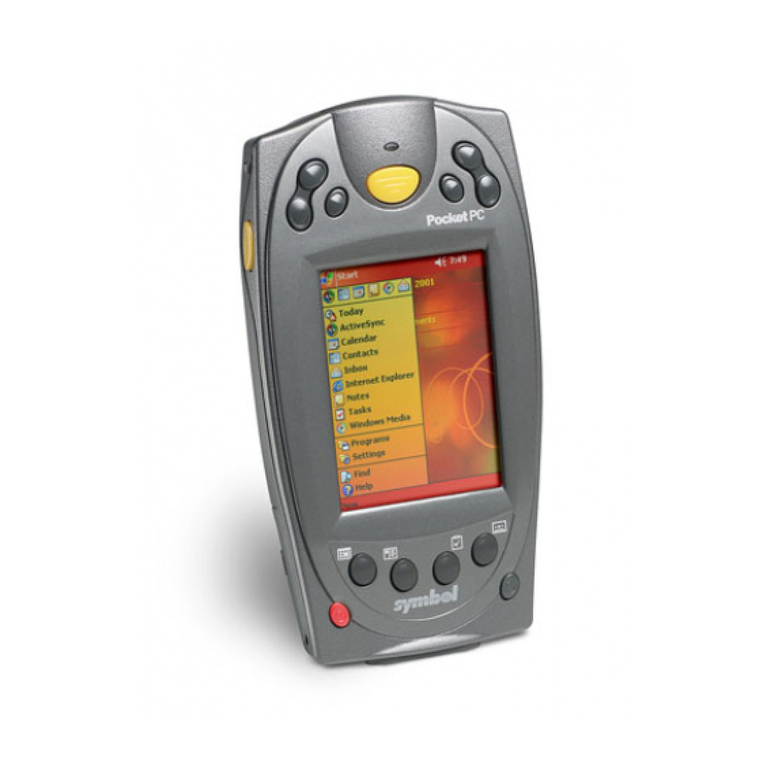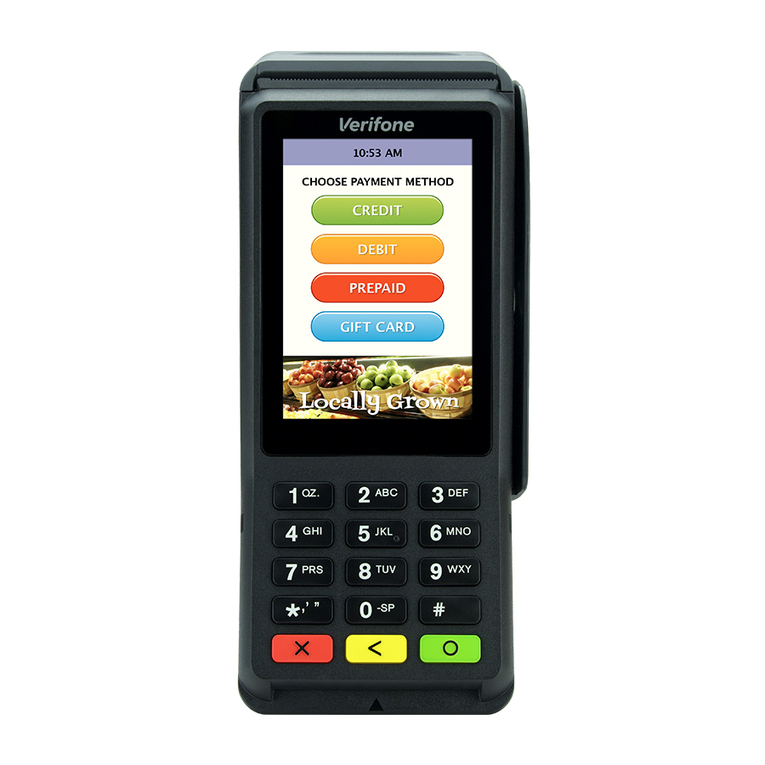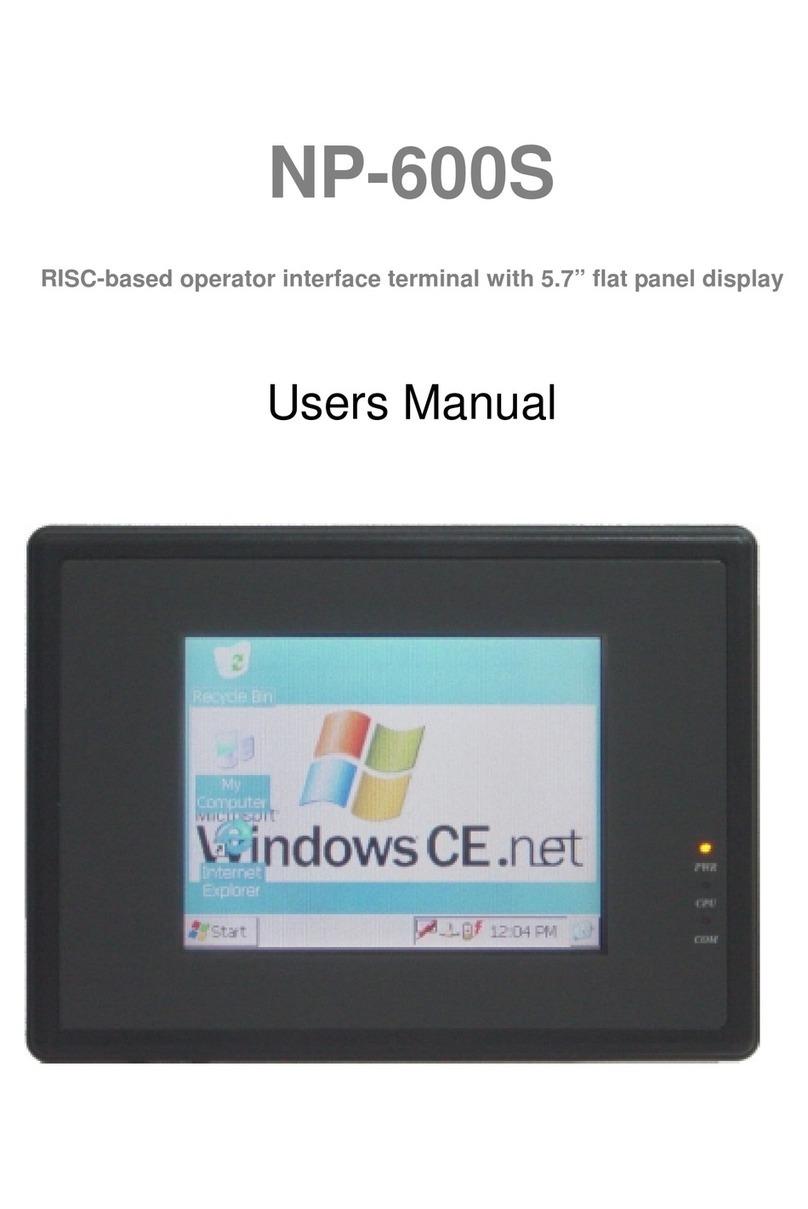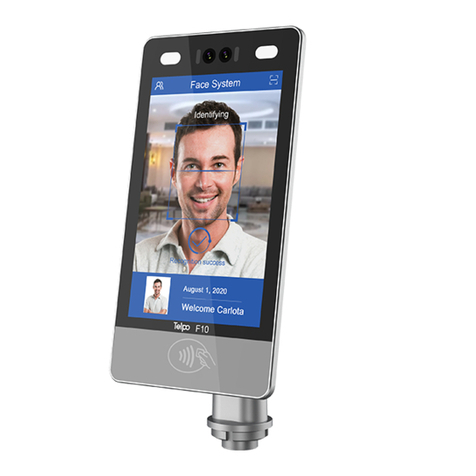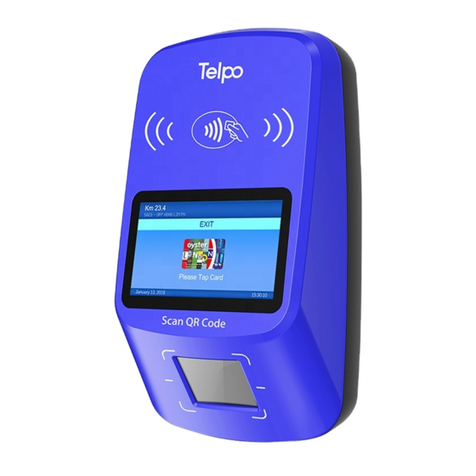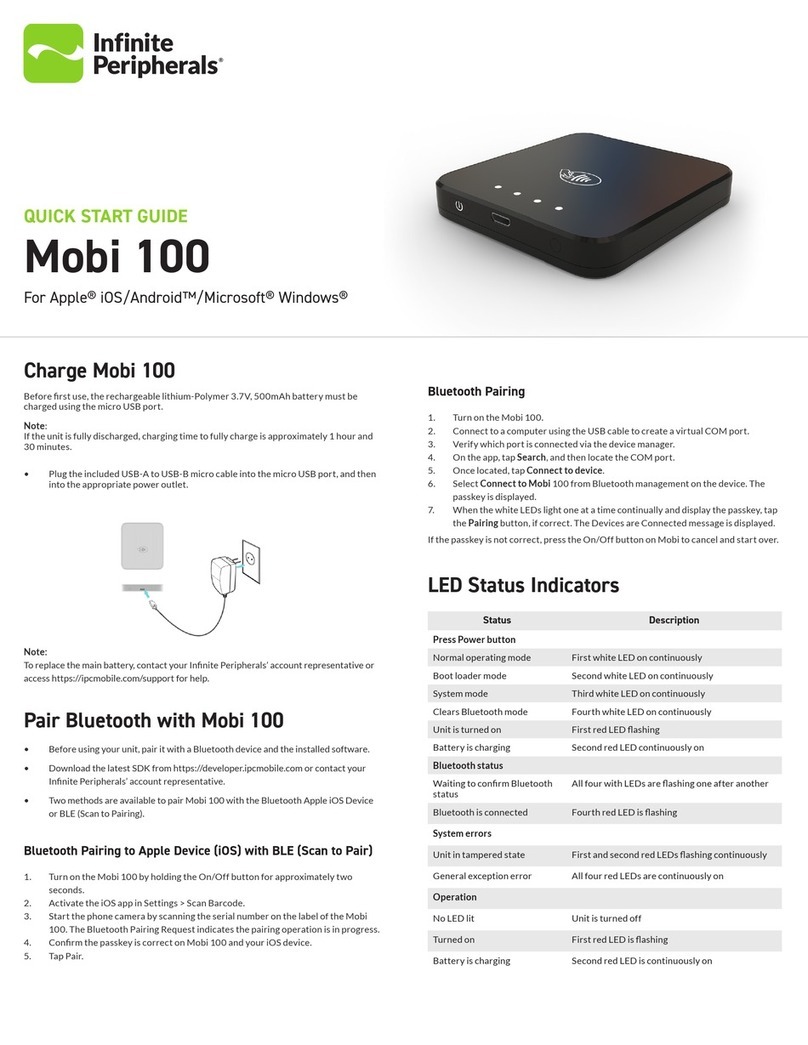SimCom T5320 User manual

T5320_User Guide_V1.02

SmartMachineSmartDecision
T5320_User Guide_V1.02 2 2012-08-10
Document Title T5320 User Guide
Version 1.02
Date 2012-08-10
Status Release
Document Control ID T5320 User Guide V1.02
General Notes
SIMCom offers this information as a service to its customers, to support application and engineering efforts that
use the products designed by SIMCom. The information provided is based upon requirements specifically
provided to SIMCom by the customers. SIMCom has not undertaken any independent search for additional
relevant information, including any information that may be in the customer’s possession. Furthermore, system
validation of this product designed by SIMCom within a larger electronic system remains the responsibility of the
customer or the customer’s system integrator. All specifications supplied herein are subject to change.
Copyright
This document contains proprietary technical information which is the property of SIMCom Limited, copying of
this document and giving it to others and the using or communication of the contents thereof, are forbidden
without express authority. Offenders are liable to the payment of damages. All rights reserved in the event of grant
of a patent or the registration of a utility model or design. All specification supplied herein are subject to change
without notice at any time.
Copyright © Shanghai SIMCom Wireless Solutions Ltd. 2012

SmartMachineSmartDecision
T5320_User Guide_V1.02 3 2012-08-10
Contents
Contents.................................................................................................................................................................... 3
Version History........................................................................................................................................................ 6
1Introduction....................................................................................................................................................... 7
2Key features....................................................................................................................................................... 7
3Terminal dimensions ........................................................................................................................................ 9
4Installation....................................................................................................................................................... 10
5Interface introduction..................................................................................................................................... 10
5.1 Overview ................................................................................................................................................ 10
5.2 T5320 Functional Diagram......................................................................................................................11
5.3 Accessory information............................................................................................................................ 12
6Application Interface...................................................................................................................................... 13
6.1 Power Supply.......................................................................................................................................... 13
6.2 Serial Interface........................................................................................................................................ 14
6.3 10 PIN I/O interface ............................................................................................................................... 15
6.3.1 Audio interface.................................................................................................................................... 17
6.3.2 ADC channel....................................................................................................................................... 18
6.3.3 GPIO interfaces................................................................................................................................... 19
6.4 LED indicator ......................................................................................................................................... 20
6.5 Micro USB interface............................................................................................................................... 21
6.6 USIM Card Interface .............................................................................................................................. 22
6.7 Antenna interface.................................................................................................................................... 23
6.7.1 Antenna connector .............................................................................................................................. 23
6.7.2 Antenna type ....................................................................................................................................... 23
6.7.3 Antenna placement.............................................................................................................................. 23
7Electrical, Reliability and Radio Characteristics......................................................................................... 24
7.1 Absolute Maximum Ratings................................................................................................................... 24
7.2 Recommended Operating Conditions..................................................................................................... 24
7.3 Electro-Static Discharge ......................................................................................................................... 24
7.4 Operating frequency ............................................................................................................................... 25
7.5 Transmitter output power and receiver sensitivity ................................................................................. 25
8Software/ Firmware Upgrade........................................................................................................................ 25
8.1 Tool introduction .................................................................................................................................... 26
8.2 Illustration of software updating............................................................................................................. 26
Appendix ................................................................................................................................................................ 29
A. Related Documents.......................................................................................................................................... 29
B. Terms and Abbreviations ................................................................................................................................. 30
C. Safety Caution ................................................................................................................................................. 31

SmartMachineSmartDecision
T5320_User Guide_V1.02 4 2012-08-10
Table Index
TABLE 1: T5320 KEY FEATURES................................................................................................................................... 8
TABLE 2: THE POWER LINE ASSIGNMENT.............................................................................................................. 13
TABLE 3: 9-POLE D-SUB (FEMALE) RS-232.............................................................................................................. 14
TABLE 4: SIGNAL ASSIGNMENT OF 10 PIN CABLE ............................................................................................... 16
TABLE 5: MIC INPUT CHARACTERISTICS ............................................................................................................... 17
TABLE 6: SPEAKER OUTPUT CHARACTERISTICS ................................................................................................. 17
TABLE 7: AUDIO PARAMETER ................................................................................................................................... 17
TABLE 8: ADC SPECIFICATION .................................................................................................................................. 18
TABLE 9: AT+CADC READ ADC.................................................................................................................................. 18
TABLE 10: T5320 GPIOS................................................................................................................................................ 19
TABLE 11: STATUS OF THE NETLIGHT INDICATOR (GREEN) ..............................................................................20
TABLE 12: AT+CUSBSPD SWITCH T5320 USB HIGH OR FULL SPEED.............................................................. 21
TABLE 13: ANTENNA CHOOSING CONSIDERATION.............................................................................................. 23
TABLE 14: ABSOLUTE MAXIMUM RATINGS........................................................................................................... 24
TABLE 15: RECOMMENDED OPERATING CONDITIONS ....................................................................................... 24
TABLE 16: THE ESD CHARACTERISTICS (TEMPERATURE: 25℃, HUMIDITY: 45 %) ....................................... 24
TABLE 17: OPERATING FREQUENCY........................................................................................................................ 25
TABLE 18: TRANSMITTER OUTPUT POWER AND RECEIVER SENSITIVITY .................................................... 25
TABLE 19: RELATED DOCUMENTS ........................................................................................................................... 29
TABLE 20: TERMS AND ABBREVIATIONS................................................................................................................ 30
TABLE 21: SAFETY CAUTION..................................................................................................................................... 31

SmartMachineSmartDecision
T5320_User Guide_V1.02 5 2012-08-10
Figure Index
FIGURE 1: T5320 OVERVIEW ........................................................................................................................................ 7
FIGURE 2: MECHANICAL DIMENSIONS OF T5320(UNIT: MM)......................................................................... 9
FIGURE 3: INSTALLATION OF THE TERMINAL ...................................................................................................... 10
FIGURE 4: T5320 INTERFACE FRONT VIEW............................................................................................................. 11
FIGURE 5: T5320 INTERFACE BACK VIEW............................................................................................................... 11
FIGURE 6: T5320 FUNCTIONAL DIAGRAM .............................................................................................................. 12
FIGURE 7: ACCESSORY INFORMATION.................................................................................................................... 12
FIGURE 8: DIMENSIONS OF POWER LINE(UNIT: MM)..................................................................................... 13
FIGURE 9: POWER INTERFACE .................................................................................................................................. 14
FIGURE 10: PIN ASSIGNMENT RS-232 (D-SUB 9-POLE FEMALE) ........................................................................ 14
FIGURE 11: COM PORT PROPERTIES OF THE HYPER TERMINAL....................................................................... 15
FIGURE 12: SIGNAL ASSIGNMENT OF 10PIN I/O PORT ......................................................................................... 16
FIGURE 13: DIMENSIONS OF 10-LINE CABLE......................................................................................................... 16
FIGURE 14: SPEAKER REFERENCE CIRCUIT .......................................................................................................... 17
FIGURE 15: INDICATOR LED....................................................................................................................................... 20
FIGURE 16: MICRO USB INTERFACE ........................................................................................................................ 21
FIGURE 17: INSTALLATION OF SIM CARD .............................................................................................................. 22
FIGURE 18: ANTENNA INTERFACE ........................................................................................................................... 23
FIGURE 19: VIRTUAL PORTS IN COMPUTER MANAGER WINDOW........................................................................ 26
FIGURE 20: QDL WINDOW .......................................................................................................................................... 26
FIGURE 21: BROWSE THE SOURCE FILE ................................................................................................................. 27
FIGURE 22: CLICK DOWNLOAD BUTTON WITHOUT POWER UP ....................................................................... 27
FIGURE 23: UPGRADE IN PROCEEDING................................................................................................................... 28
FIGURE 24: FINISH UPGRADING ............................................................................................................................... 28

Smart Machine Smart Decision
T5320_User Guide_V1.02 7 2012.08. 10
Version History
Date Version Description of change Author
2012-07-23 1.01 Origin Libing
2012-08-10 1.02 Figure 1 & Figure 11 are replaced to new pictures. Libing

SmartMachineSmartDecision
T5320_User Guide_V1.02 7 2012-08-10
1Introduction
This document describes features, functions and interfaces of T5320 terminal in great detail.
T5320 is a quad-band GSM/GPRS/EDGE and dual-band UMTS /HSDPA that works on frequencies of GSM
850MHz, EGSM 900 MHz, DCS 1800 MHz, PCS 1900MHz and WCDMA 2100/900MHz, which is a ideal
solution for wireless m2m applications, the terminal features HSDPA Category 5/6 -3.6 Mbps.
With the help of this document user can understand T5320 interface specifications, electrical and mechanical
quickly.
Figure 2: T5320 overview
Note: The T5320 Terminal is fully complying with RoSH following requirements of European standards.
2Key features
T5320 terminal terminal has the following features:
1. Standard AT commands set
2. SIMCom proprietary AT commands set
3. watch-dog function
4. Short circuit protection
5. Voice call
6. GPIOs
7. ADC function

SmartMachineSmartDecision
T5320_User Guide_V1.02 8 2012-08-10
Table 1: T5320 key features
Feature Implementation
Power supply 5V ~ 30V
Transmission data
● Dual-mode UMTS/HSDPA/EDGE/GPRS operation
● GPRS Class B, multislot class 12 operation, Supports coding scheme: CS1-4
● EDGE multislot class 12 operation, Supports coding schemes MSC1-9
● UMTS R99 data rates-384 kbps DL/UL
● HSDPA Category 5/6 -3.6 Mbps and Category12-1.8 Mbps
● Integrate the TCP/IP protocol
Transmitting power
zClass 4 (+33dBm) for GSM850 and EGSM900
zClass 1 (+30dBm) for DCS 1800 PCS GSM1900
zClass 3 (+24dBm) for WCDMA 2100, WCDMA FDD BDI
zClass 3 (+24dBm) for WCDMA 900, WCDMA FDD BDVIII
Temperature range
zNormal operation: -30°C ~ +75°C
zRestricted operation: -35°C ~ -30°C and +75 °C ~ +80°C*
zStorage temperature -40°C ~ +85°C
CSD zCSD feature: 9.6, 14.4, 64 kbps UL/DL
SMS
● MT, MO, CB, Text and PDU mode
● SMS storage: SIM card
● Support transmission of SMS alternatively over CSD or GPRS. User can
choose preferred mode.
FAX Group 3 Class 1
USIM interface Support USIM card: 1.8V, 3V
External antenna SMA type RF connector
Audio features
Speech codec modes:
● Half Rate (ETS 06.20)
● Full Rate (ETS 06.10)
● Enhanced Full Rate (ETS 06.50 / 06.60 / 06.80)
● AMR (WCDMA)
● AMR+QCP (GSM)
● A5/1, A5/2, and A5/3 ciphering
USB Support USB2.0 Slave mode
RS232 serial port
Serial port:
zFull modem interface with status and control lines, unbalanced,
asynchronous.
z1200bps to 115200bps.
zDefault rate is 115200bps.
zCan be used for AT commands data stream.
zSupport RTS/CTS hardware handshake and software ON/OFF flow control.
zMultiplex ability according to GSM 07.10 Multiplexer Protocol.
Phonebook management Support phonebook types: SM, FD, LD, RC, ON, MC.
SIM application toolkit Support SAT class 3, GSM 11.14 Release 98
Support USAT
Physical characteristics Size: 98*60*23mm
Weight: 128g

SmartMachineSmartDecision
T5320_User Guide_V1.02 9 2012-08-10
Firmware upgrade Firmware upgradeable by USB interface
*T5320 does work at this temperature, but some radio frequency characteristics may deviate from the GSM specification.
3Terminal dimensions
Figure 3: Mechanical dimensions of T5320(Unit: mm)

SmartMachineSmartDecision
T5320_User Guide_V1.02 10 2012-08-10
4Installation
The terminal can be fixed by two kickstands (Optional) that provided by SIMCom, the following figure is the
illustration.
Figure 4: Installation of the terminal
5Interface introduction
5.1 Overview
T5320 Terminal provides the following connectors for power supply, GPIOs, Audio, ADC, Serial port and
antenna:
zThe GSM/WCDMA antenna interface(SMA type female connector)
zThe 4 PIN I/O port for power supply
zThe 10 PIN I/O port for audio, GPIOs and ADC
zThe standard RS232 interface
zLED indicator for power (Red) and GSM/WCDMA netlight (Green)
zUSIM card holder
zMicro USB interface

SmartMachineSmartDecision
T5320_User Guide_V1.02 11 2012-08-10
Figure 5: T5320 interface Front view
Figure 6: T5320 interface Back view
Note: For the I/O interface, SIMCom provides 4-line cable and 10-line cable (optional) to assist developers, it
will be introduced at the following chapter.
5.2 T5320 Functional Diagram
The following figure shows a functional diagram of T5320 and typical accessories.

SmartMachineSmartDecision
T5320_User Guide_V1.02 12 2012-08-10
Adapter
board
SIM
Card Feed dog
Reset
USB
Figure 7: T5320 functional diagram
5.3 Accessory information
Figure 8: Accessory information

SmartMachineSmartDecision
T5320_User Guide_V1.02 13 2012-08-10
A: T5320 Terminal
B: GSM Antenna
C: Male to Female DB9 Line
D: 5V Adapter
E: Two kickstands (Optional)
F: 10-Line cable (Optional)
E: Micro-USB cable
6Application Interface
6.1 Power Supply
Customer can use the DC adapter that SIMCom provides as the power source.
If customer does not use the adapter, then DC source should be satisfied with the following requirements.
zInput voltage range 5-30V
zNormalvoltage 12V
zCurrentability 1A
The following chapter introduces the power line that SIMCom provides to customers, customer can power the
terminal by connect the terminal to the DC source via this line.
The power line includes four lines as the following figure shows, and table 3 gives a detailed description.
Table 2: The power line assignment
PIN Number Colour Item
1 white NC
2 Red Power
3 Yellow NC
4 Black Ground
Figure 9: dimensions of power line(Unit: mm)

SmartMachineSmartDecision
T5320_User Guide_V1.02 14 2012-08-10
Figure 10: Power interface
When a valid power appears the terminal will power up automatic, for the MCU that inside the terminal processed
the power up part, MCU also acts as a Watch Dog, when the terminal runs wrong, MCU will cut off the power
and recover it immediately to restart the terminal.
6.2 Serial Interface
T5320 provides one asynchronous RS232 serial port (female).The RS232 standard interface serves to connect a
PC, Data Terminal Equipment (DTE) or other application, which acts as host controller of the T5320 Terminal
with all its functions. Through the RS232 interface it can be used as GSM/GPRS modem for sending and
receiving of SMS, Data and Fax calls.
Figure 11: Pin assignment RS-232 (D-Sub 9-pole female)
Table 3: 9-pole D-Sub (female) RS-232
Pin no Signal name I/O Function
1 DCD O Data Carrier Detected
2 RXD O Receive Data

SmartMachineSmartDecision
T5320_User Guide_V1.02 15 2012-08-10
3 TXD I Transmit Data
4 DTR I Data Terminal Ready
Attention: The ignition of T5320
Terminal is activated via a rising
edge of high potential (+3 ... +15 V)
5 GND
- Ground
6 DSR O Data Set Ready
7 RTS
I Request To Send
8 CTS O Clear To Send
9 RING O Ring Indication
Note: User can use AT command “AT+IPR=x” to set a fixed baud rate and the setting will be saved to
non-volatile flash memory automatically. After the configuration is set as fixed baud rate, the URC such as
"RDY", "+CFUN: 1" and "+CPIN: READY” will be reported when T5320 is powered on.
Hyper terminal usually as the PC software tool to operate T5320; customer can set up a connection between PC
and terminal, configure the port properties as the figure 9 shows.
Figure 12: COM port properties of the hyper terminal
6.3 10 PIN I/O interface
T5320 provides a 10 PIN I/O interface for customer use, including Audio, GPIOs and 1 ADC channel.
The following figure gives a brief view of signal assignment.

SmartMachineSmartDecision
T5320_User Guide_V1.02 16 2012-08-10
Figure 13: signal assignment of 10PIN I/O port
To make the usage conveniently, SIMCom provides a cable for customer, it can be inserted to the 10 PIN I/O port
so customer can develop their application by connecting some devices.
Figure 11 shows the specification of cable.
Figure 14: Dimensions of 10-line cable
Table 4: signal assignment of 10 pin cable
Connecting diagram
Terminal signal
P1 Wire color and cutting
length Signal name I/O Command
1 Green GPIO3 I/O
2 Yellow GPIO1 I/O
Configurable
by AT
commands
3 Black GND Ground
4 Orange SPK+ O
5 Brown MIC+ I
6 White
1007 26#
GPIO4 I/O Configurable

SmartMachineSmartDecision
T5320_User Guide_V1.02 17 2012-08-10
7 Gray GPIO2 I/O by AT
commands
8 Red ADC I
9 Purple SPK- O
10 Blue
MIC- I
6.3.1 Audio interface
T5320 has one pair of audio input and audio output; it can be connected to a speakerphone directly.
Figure 15: Speaker reference circuit
Customer can set the terminal MIC gain level to make the sounds louder so that the listener can hear more clearly.
And if the sound a little lower on the terminal side, customer can use the “AT +CLVL” to make the sound higher
so that customer can hear clearly.
The AT commands should be send to the terminal by RS232 or USB interface, and the following table shows the
detail commands.
Table 5: MIC input characteristics
Parameter Min Typ Max Unit
Working Voltage - 1.8 - V
Working Current 0.07 0.4 1 mA
External Microphone Load Resistance 1.2 2.2 k Ohms
Table 6: Speaker output characteristics
Parameter Min Typ Max Unit
Quiescent Current - 2.5 4 mA
Load resistance - 8 - Ohm
Output power(1KHz) - 500 - mW
Table 7: Audio parameter
Parameter Influence to Range Gain range Calculation AT command
micAmp1 MICP/MICN
analogue amplifier 0…1 0…24dB 2 steps AT+CMICAMP1

SmartMachineSmartDecision
T5320_User Guide_V1.02 18 2012-08-10
gain before ADC
txVol Digital gain of input
signal after ADC
0,
1...65535
Mute,
-84...+12dB
20 * log
(txVol/
16384)
AT+CTXVOL
txGain
Digital gain of input
signal after
summation of
sidetone
0,
1...65535
Mute,
-84...+12dB
20 * log
(txGain/
16384)
AT+CTXGAIN
txFilter
Input PCM 13-tap
filter parameters, 7
values
0...65535 --- MATLAB
calculate AT+CTXFTR
rxGain
Digital gain of
output signal after
summation of
sidetone
0,
1...65535
Mute,
-84...+12dB
20 * log
(rxGain/
16384)
AT+CRXGAIN
rxVol
Digital Volume of
output signal after
speech decoder,
before summation of
sidetone and DAC
-300…300 dbm -300…300d
bm
AT+CLVL
AT+CVLVL
AT+CRXVOL
stGain Digital attenuation
of sidetone 0, 1...65535 Mute,
-96...0dB
20 * log
(stGain/
16384) -12
AT+SIDET
rxFilter
Output PCM 13-tap
filter parameters, 7
values
0...65535 --- MATLAB
calculate AT+CRXFTR
Please refer to document [1] and document [3] for details.
6.3.2 ADC channel
T5320 provides an auxiliary ADC, which can be used to measure the voltage. User can use AT command
“AT+CADC=2” to read the voltage value.
Table 8: ADC specification
Parameter Min Typ Max Unit
Voltage range 0 - 2.2 V
ADC Resolution - 12 - bits
Sampling rate - - 200K Hz
Note: the maximum voltage that the ADC can gather is 2.2V
Table 9: AT+CADC Read ADC
Description

SmartMachineSmartDecision
T5320_User Guide_V1.02 19 2012-08-10
Read the ADC value from modem. We support 3 type of ADC, raw type, temperature type and voltage type.
SIM PIN References
NO Vendor
Syntax
Test Command Responses
AT+CADC=? +CADC: (range of supported <adc>s)
OK
Write Command Responses
+CADC: <value>
OK
AT+CADC=<adc>
ERROR
Execution Command Responses
AT+CADC Same as AT+CADC= 0:
+CADC: <value>
OK
Defined values
<adc>
ADC type:
0 – raw type.
1 – temperature type.
2 – voltage type(mv)
<value>
Integer type value of the ADC.
Examples
AT+CADC=?
+CADC:(0-2)
OK
AT+CADC=0
+CADC: 187
OK
6.3.3 GPIO interfaces
T5320 provides 4 GPIO pins. All GPIOs can be configured as inputs or outputs. User can use AT Commands to
read or write GPIOs status. Refer to document [1] for details.
Table 10: T5320 GPIOs
T5320 GPIO CPU Pin No. I/O Function

SmartMachineSmartDecision
T5320_User Guide_V1.02 20 2012-08-10
Example 1: If user use T5320 GPIO1 pin as an output GPIO:
1) AT+CGFUNC=9,0 //close wake up module function, only disable the function can this pin be used
as GPIO
2) AT+CGDRT=0,1 //set T5320 GPIO1 to output
3) AT+CGSETV=0,1 //set T5320 GPIO1 to high value
Example 2: If user use T5320 GPIO4 pin as an input GPIO:
1) AT+CGDRT=5,0 //set T5320 GPIO4 to output
Please refer to document [1] and document [2] for details.
6.4 LED indicator
A red led indicates the power status, when a valid power appears, the red led will lighten up. But a lighten up red
led does not mean that the terminal has been powered up.
A green led indicates the terminal status and GSM net status, after the terminal been powered up and registered to
the network, it will blink at a certain frequency.
Figure 16: Indicator LED
Table 11: Status of the NETLIGHT indicator (Green)
LED Status T5320 behavior
Always On Searching Network/Call Connect
200ms ON, 200ms OFF Data Transmit
800ms ON, 800ms OFF Registered network
Off Power off / Sleep
GPIO1 GPIO0 I/O General input/output PIN. It can be used as wake/interrupt
signal to host from module If it is unused, left open.
GPIO2 GPIO2 I/O General input/output PIN.
GPIO3 GPIO3 I/O General input/output PIN.
GPIO4 GPIO5 I/O General input/output PIN.
Table of contents
Other SimCom Touch Terminal manuals
Popular Touch Terminal manuals by other brands

protech
protech PA-3110 user manual

datacap systems
datacap systems DC Direct Ingenico Move/5000 Quick reference guide
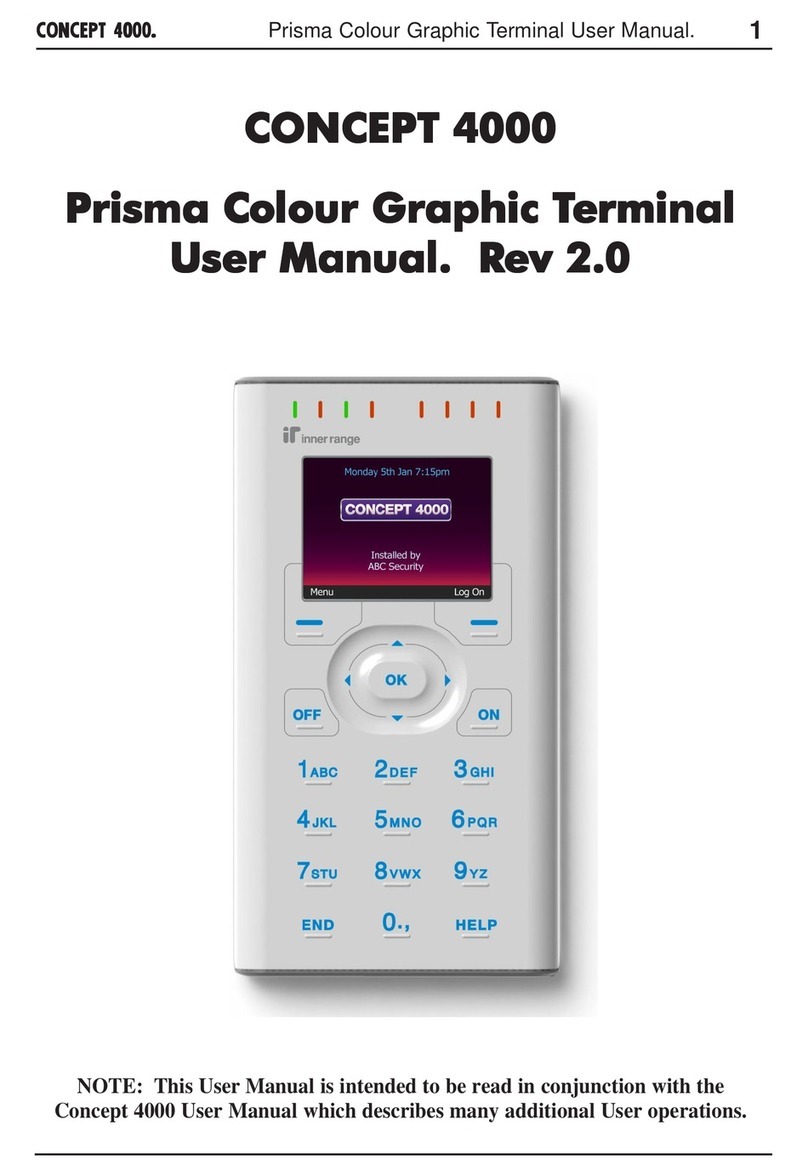
Inner Range
Inner Range 4000 user manual
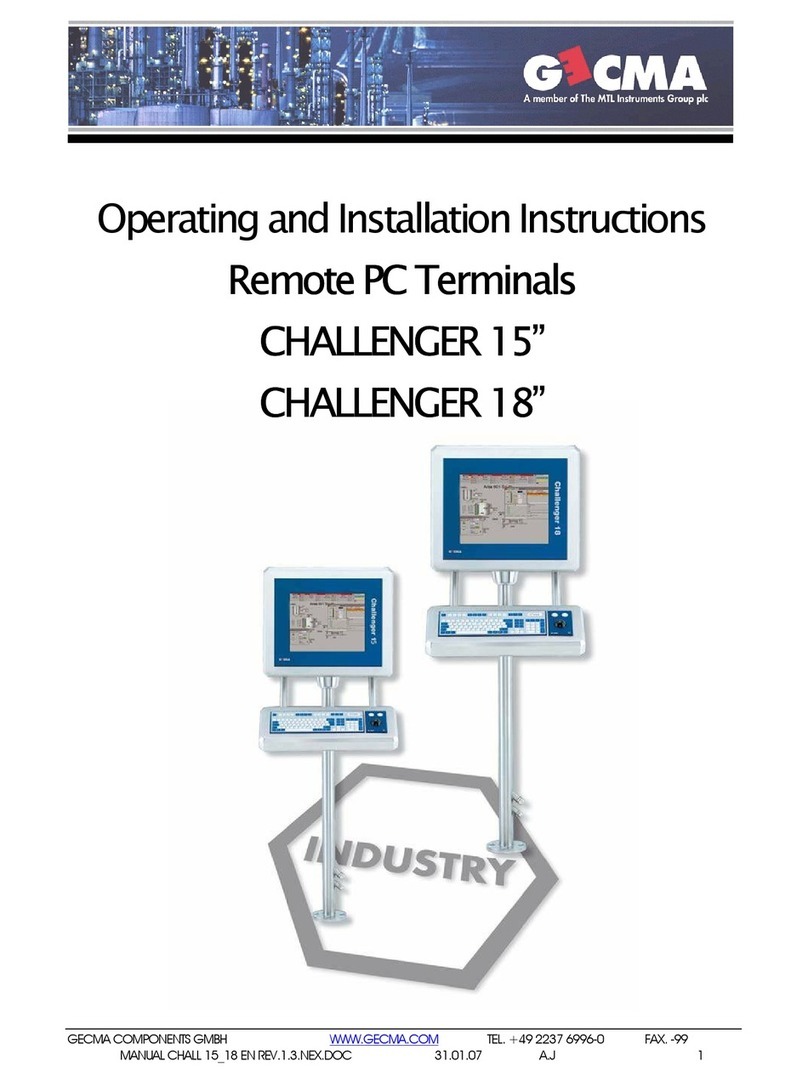
GECMA
GECMA CHALLENGER 15 Inch Operating and installation instructions
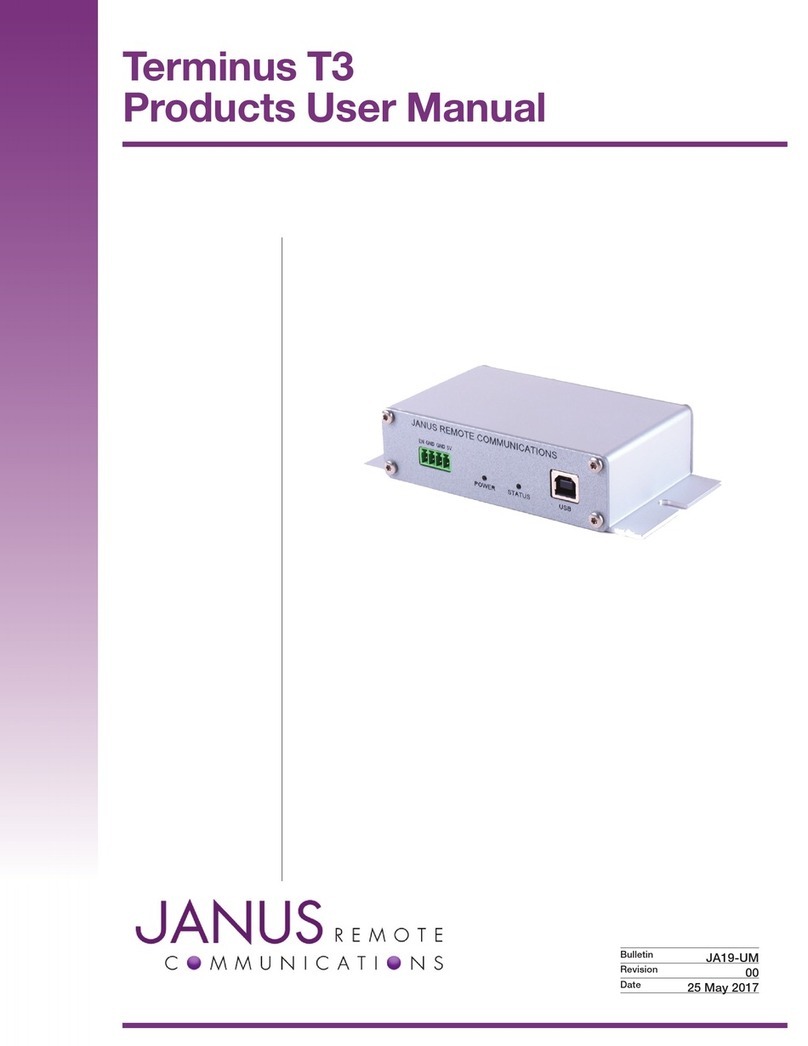
Janus Remote Communications
Janus Remote Communications Terminus T3 Product user manual
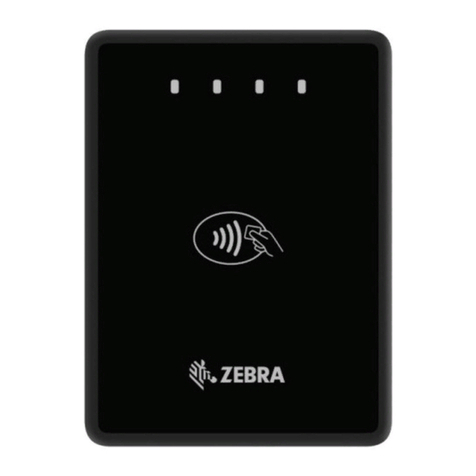
Datecs
Datecs Zebra PD20 user manual
